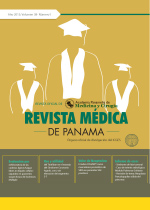Medidas Mínimas de Bioseguridad en instalaciones de salud durante la Pandemia del SARS-CoV-2 [Minimum Biosafety Measures in healthcare facilities during SARS-CoV-2 Pandemic]

Autores/as
DOI:
https://doi.org/10.37980/im.journal.rmdp.2020871Resumen
ResumenEl SARS-CoV-2 es un nuevo virus, causante de la actual pandemia que nos afecta. Dada su virulencia y nuestro desconocimiento de su biología, representa una real amenaza para la población. Además de las medidas epidemiológicas, el personal de salud, clínico, técnico y administrativo son el frente para el diagnóstico y tratamiento de nuestra población. Es de suma importancia que nuestro personal pueda implementar medidas básicas para minimizar la exposición y contagio de este virus. Se ha revisado las recomendaciones generales de la Organización Mundial de Salud para personal de salud sobre requerimientos mínimos que debemos cumplir en tal entorno. También hemos provisto de rótulos que deben ser colocados en toda instalación que maneja muestras de SARS-CoV-2. Es necesario que esta información sea de fácil acceso para todo profesional de salud, y así pueda revisarla e internalizarla para su protección, la de sus pacientes, y familiares. Esperamos que sea de gran utilizad para fortalecer nuestras capacidades de bioseguridad en nuestro país, y utilizar esta información como herramienta educativa y de capacitación básica.
Abstract
SARS-CoV-2 is a new virus, causing the current pandemic affecting us. Given its virulence and our lack of understanding of its biology, it represents a real threat to the population. Additionally to the epidemiological measures, the clinical, technical and administrative personnel are at the front in the battle to diagnose and treat our population. It is of utmost importance that our staff can know and implement basic safety measures to minimize the exposure and spread of this virus. We have reviewed the general recommendations of the World Health Organization for healthcare personnel of the minimum requirements that we must meet in such an environment. Here, it has also been provided banners to be displayed in every facility processing SARS-CoV-2 samples. This guide must be easily accessible for all health professional to be reviewed and internalized for their safety, of their patients, and their families. We hope it will be of great use in our country to strengthen our biosafety capabilities and to use this information for educational and training purposes.
Publicado
Número
Sección
Licencia
Derechos autoriales y de reproducibilidad. La Revista Médica de Panama es un ente académico, sin fines de lucro, que forma parte de la Academia Panameña de Medicina y Cirugía. Sus publicaciones son de tipo acceso gratuito de su contenido para uso individual y académico, sin restricción. Los derechos autoriales de cada artículo son retenidos por sus autores. Al Publicar en la Revista, el autor otorga Licencia permanente, exclusiva, e irrevocable a la Sociedad para la edición del manuscrito, y otorga a la empresa editorial, Infomedic International Licencia de uso de distribución, indexación y comercial exclusiva, permanente e irrevocable de su contenido y para la generación de productos y servicios derivados del mismo. En caso que el autor obtenga la licencia CC BY, el artículo y sus derivados son de libre acceso y distribución.






